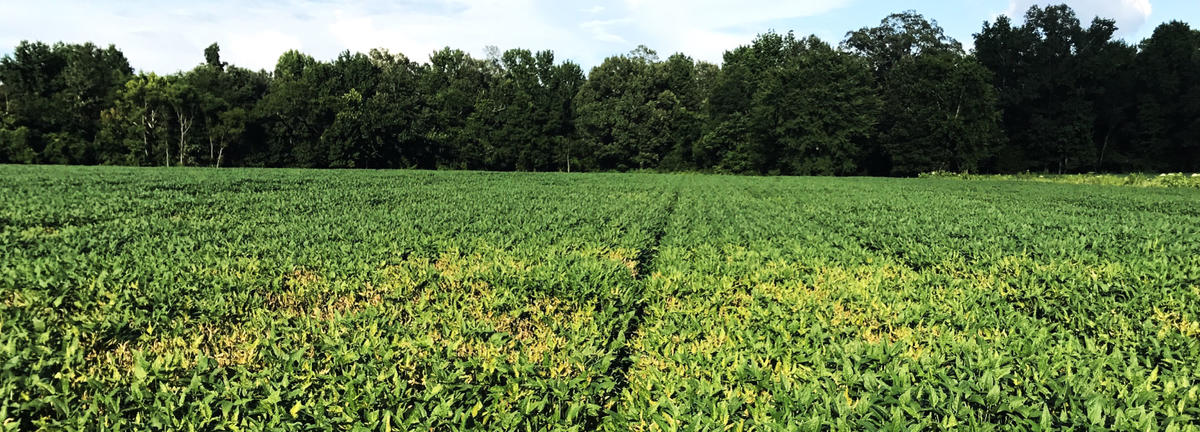
Soybean field in summer
Background
The soil-borne fungus Fusarium virguliforme is the cause of soybean sudden death syndrome (SDS)—an important disease affecting soybean yield in Minnesota—and other diseases in crops like alfalfa, dry beans, and clover.
F. virguliforme is relatively new to Minnesota. There are still gaps in knowledge regarding current distribution, temperature limits, factors influencing future spread and possible pathogenicity to non-soybean crops. This project will map the distribution of F. virguliforme across the state; determine its risk to edible dry bean, clover and alfalfa; and determine whether disease risk varies by region, temperature, and soil type.
Another important element of F. virguliforme is its connection to soybean cyst nematode (SCN), an invasive pest that has spread through much of southern Minnesota and now into northern parts of the state. Cysts produced by the nematode have been found to harbor F. virguliforme. In some areas, soil microbes seem to suppress both SCN and F. virguliforme. This research will examine the major interactions between F. virguliforme, SCN and other soil fungi.
Research questions
- What is the current geographic distribution of F. virguliforme in Minnesota?
- Are aerial and satellite images useful for detecting soybean sudden death syndrome caused by F. viguliforme?
- What is the potential for F. virguliforme crop damage to edible dry bean, alfalfa, and clover?
- Is there a consistent correlation between soybean sudden death syndrome and soybean cyst nematode in soybean fields? Is F. virguliforme frequently found within SCN cysts?
- What is the cold temperature limit for F. virguliforme survival?
- Does virulence of F. virguliforme vary by region or soil type?
Outcomes
This research team discovered factors that influence the ability of the fungus Fusarium virguliforme to become established as a destructive pathogen on crops in new areas of Minnesota. This project advances fundamental and applied knowledge of F. virguliforme that can be harnessed for disease management and risk analysis by scientists, agricultural professionals, and crop producers.
Publications
- Genetic diversity and aggressiveness of Fusarium virguliforme isolates across the Midwestern United States (Phytopathology, 2022)
- Distribution and Traits of the Fungal Pathogen Fusarium virguliforme that Influence Spread and Survival in Minnesota (Rebecca Hall thesis, 2021)